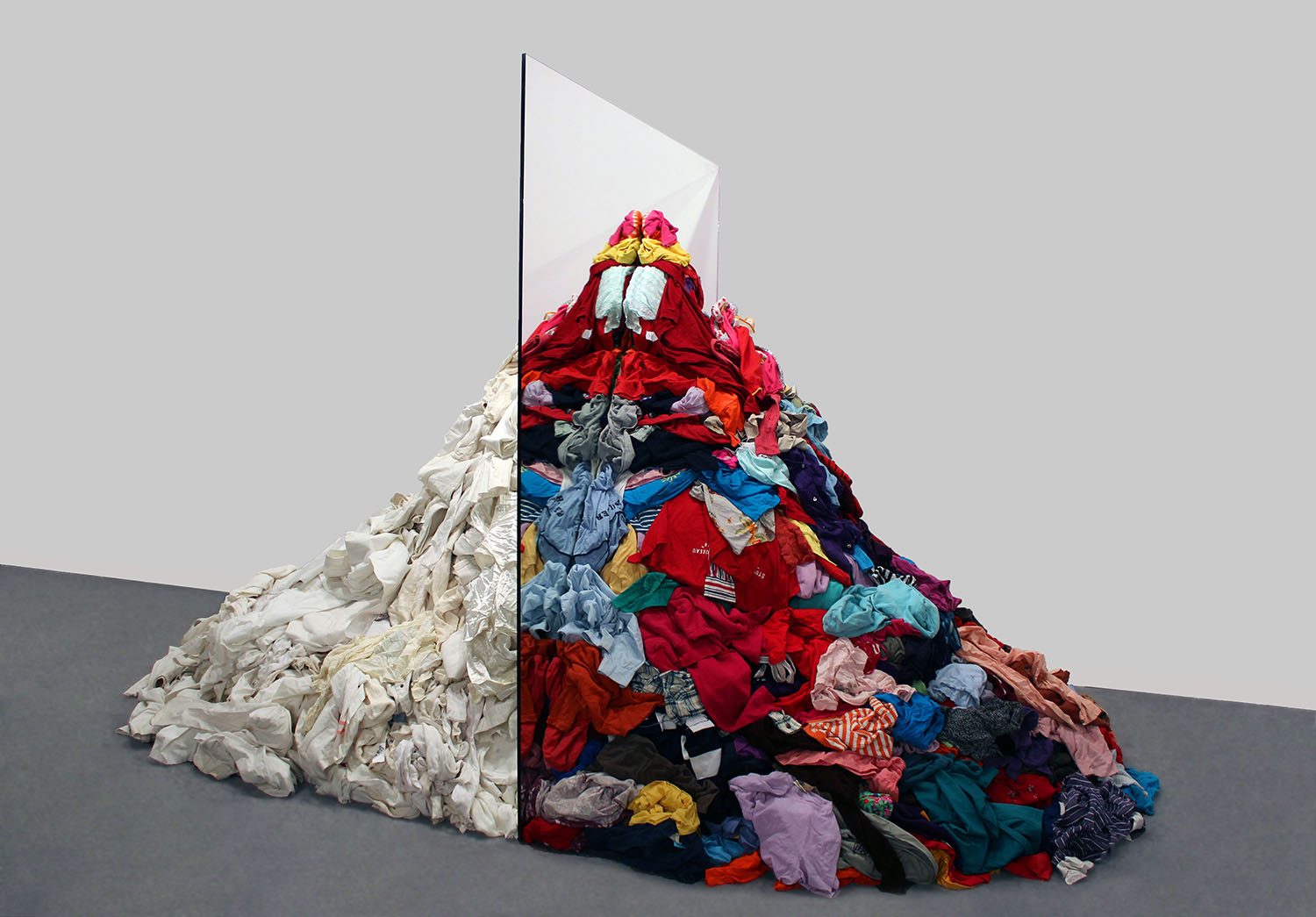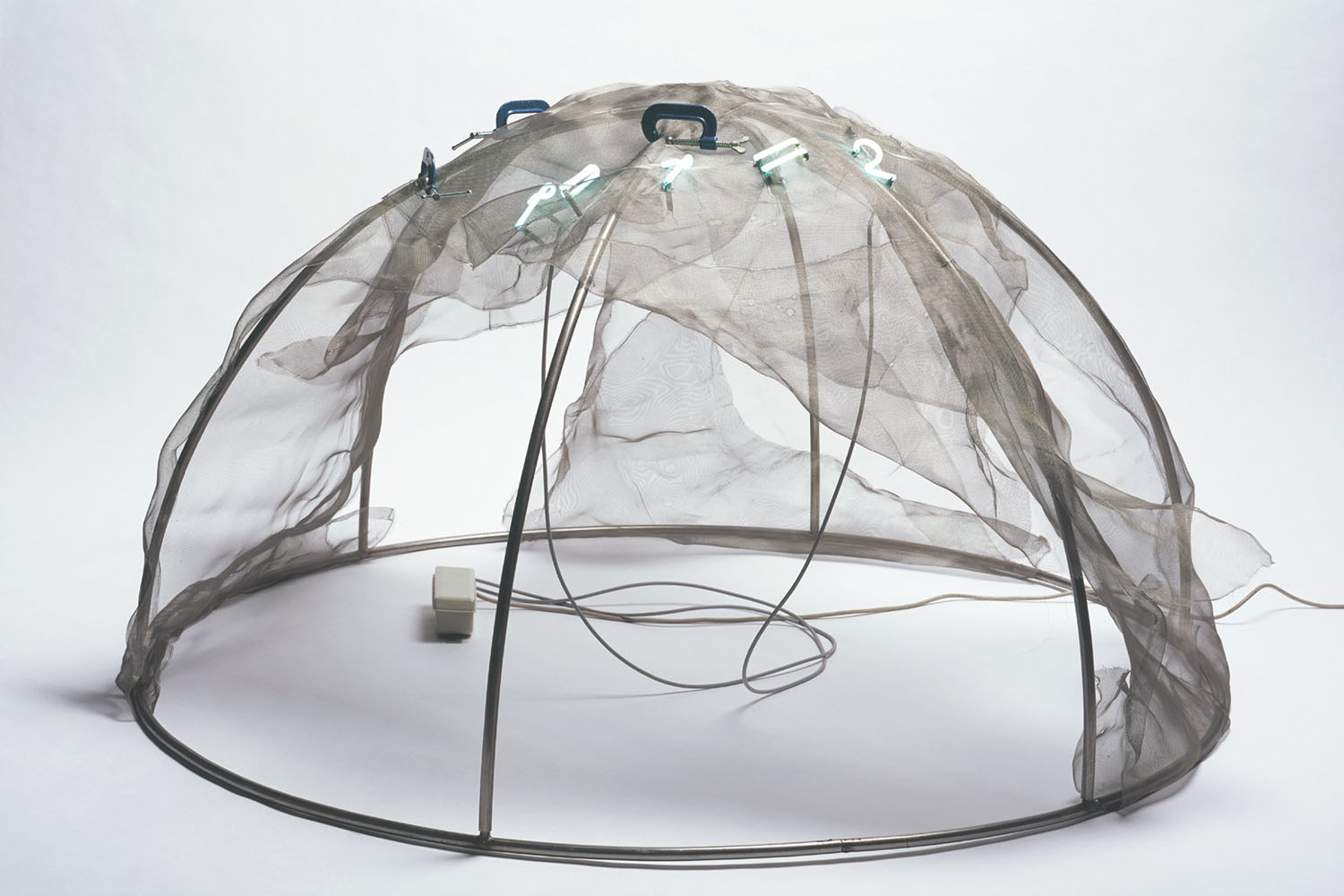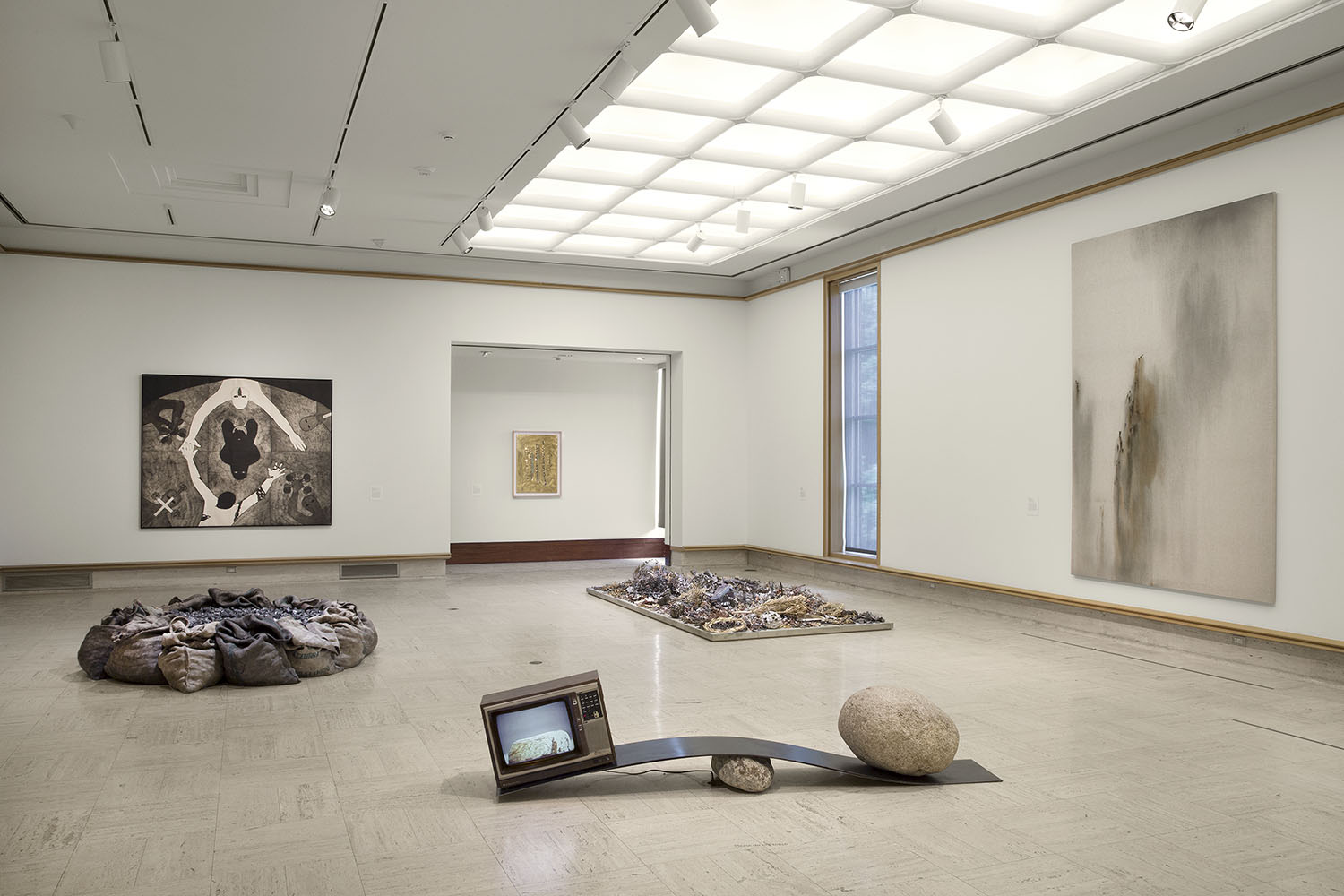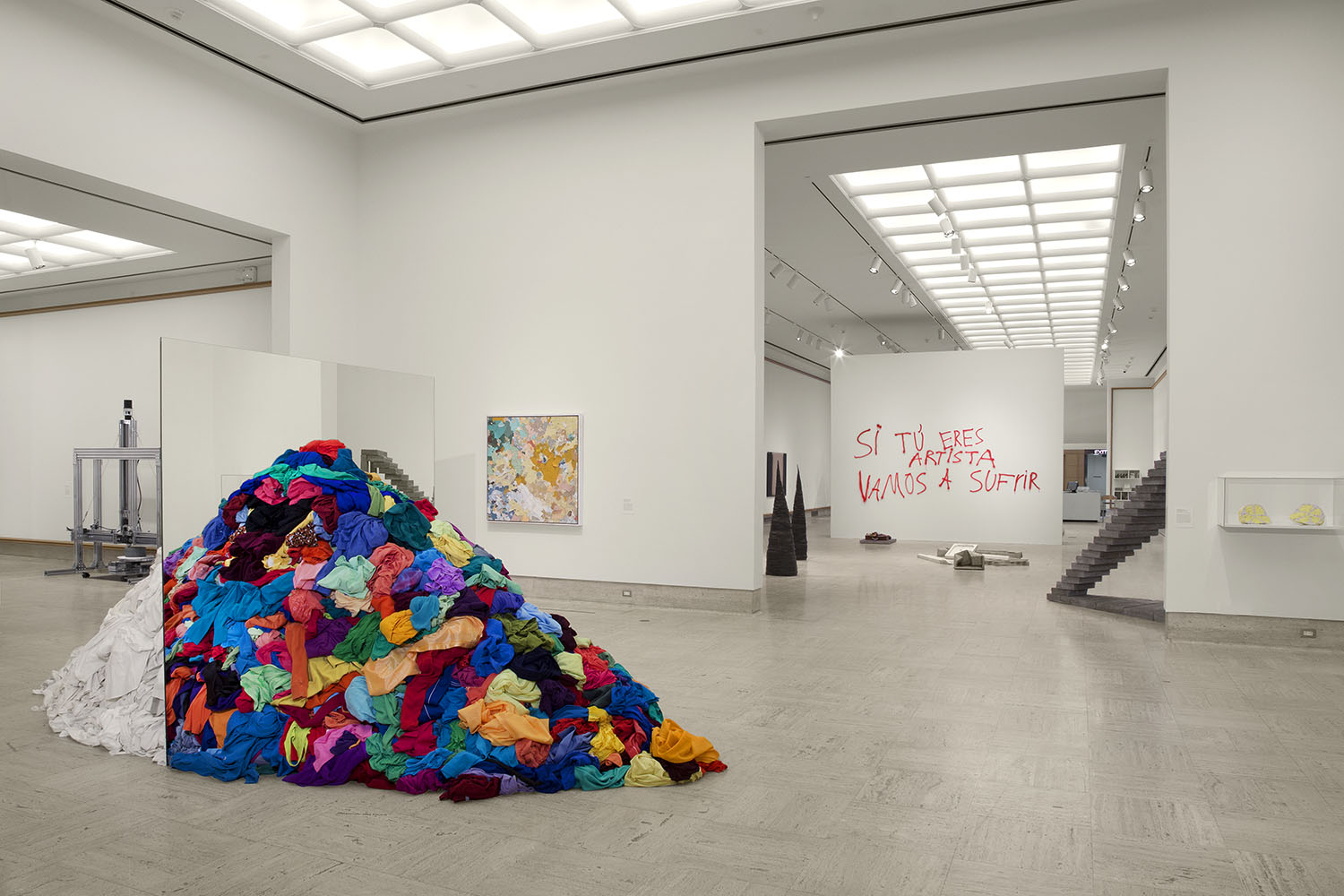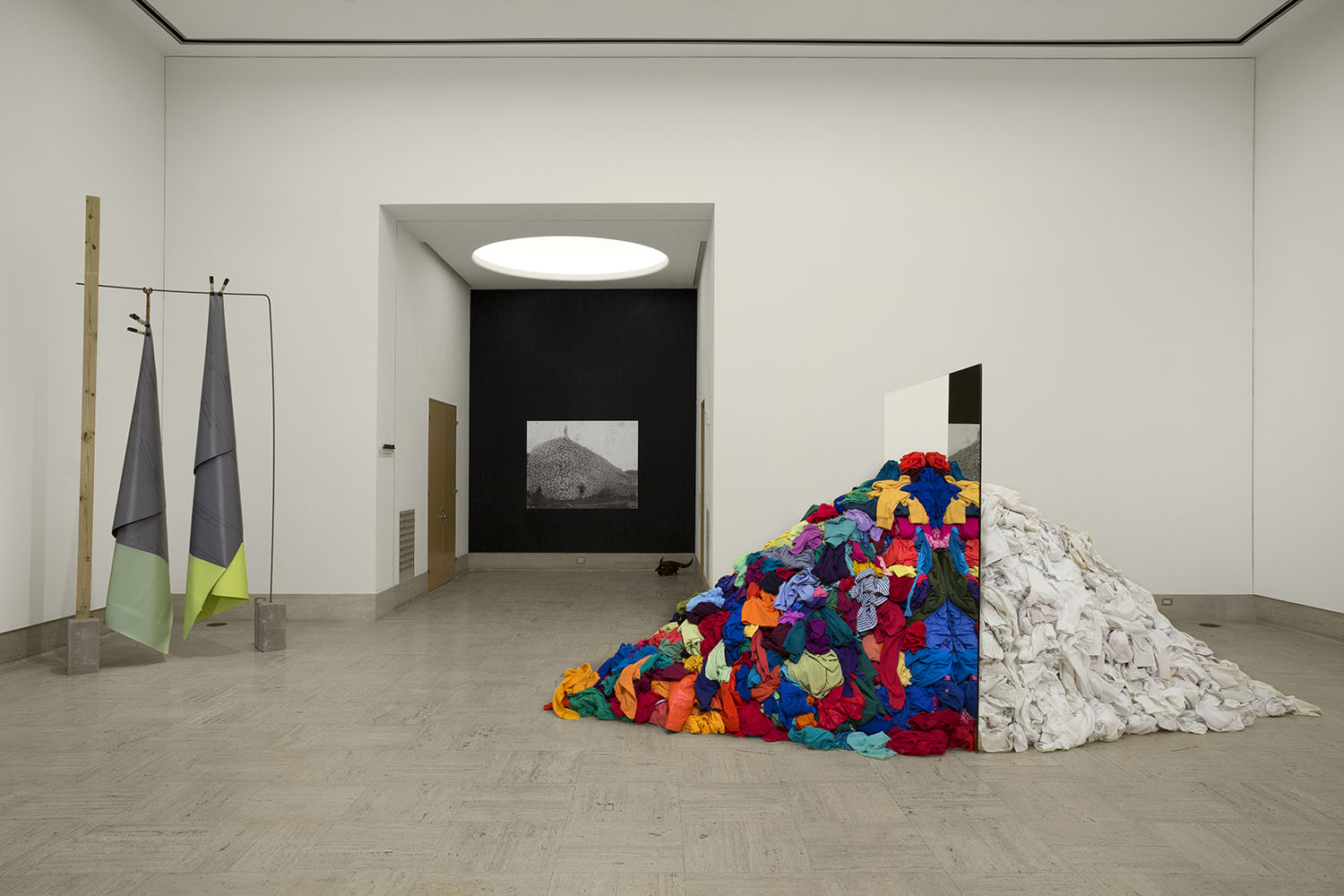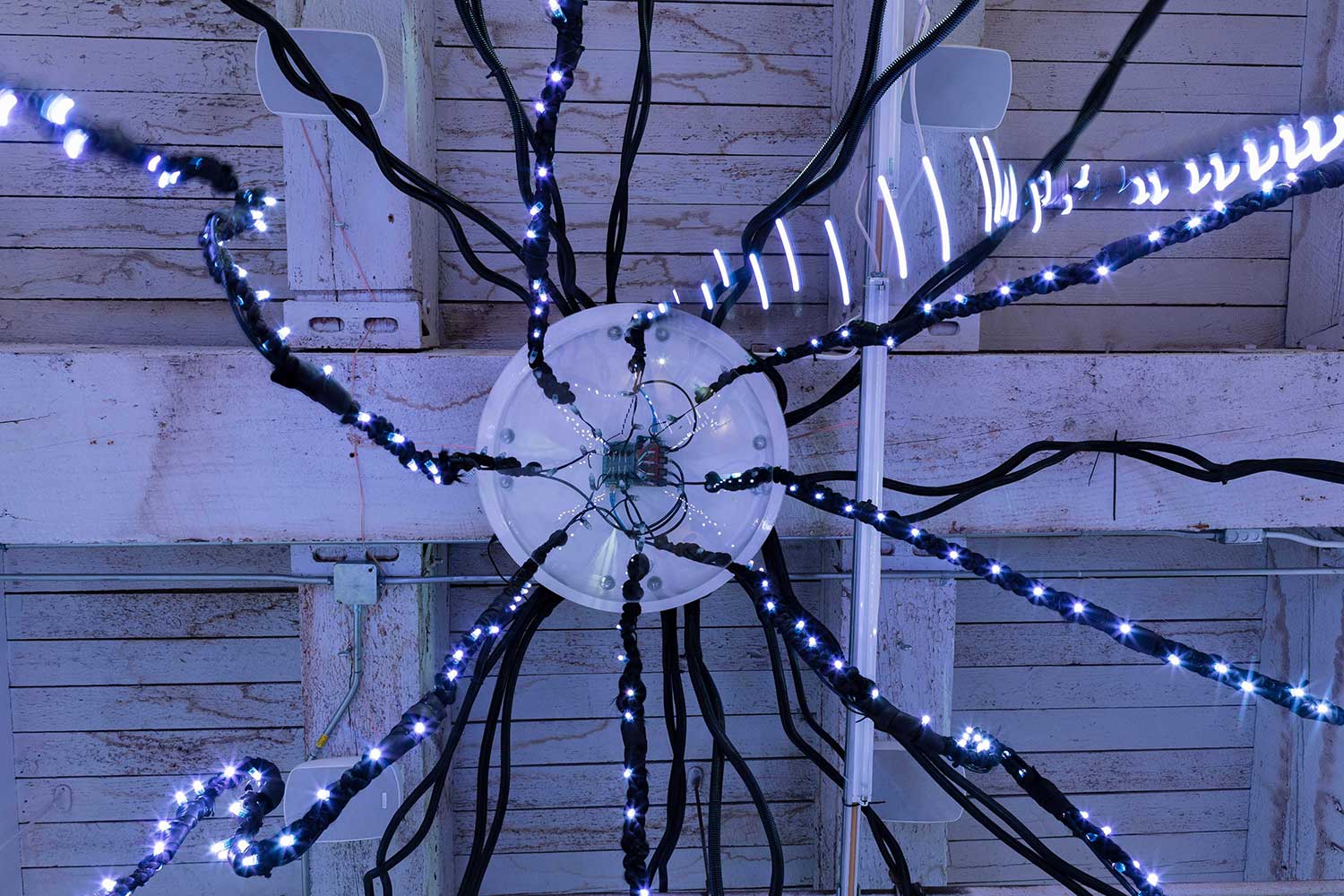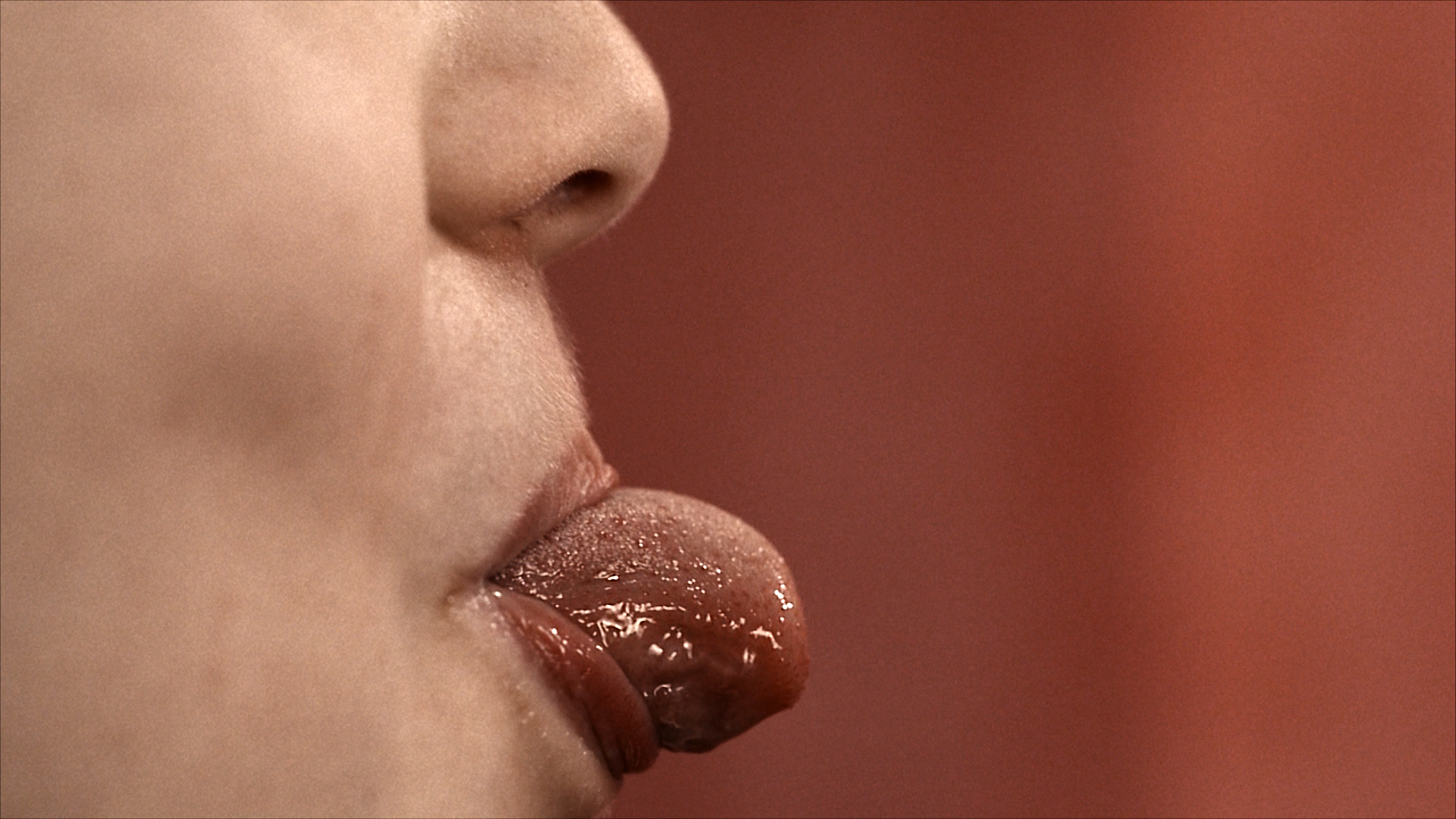“Landlord Colors” stages a comparative history of the art of sociopolitical upheaval, bringing together work from five far-flung locales during periods of crisis: Italy in the late 1960s and 70s, South Korea in the 1970s, Cuba since the collapse of the Soviet Union, Greece since the eurozone debt crisis of 2009, and Detroit from the 1967 uprising to the present. Carrying through this medley of disparate historical conditions is a story about artists foregrounding material as a reflection of difficult times.
A lopsided periodization, the long view we get of Detroit contrasts with the more succinct glimpses of Arte povera from Italy’s Years of Lead or recent work from Greece, produced amid the ravages of finance capital and the economic terrorism of Brussels and Frankfurt. The picture we’re given of the Motor City over a half-century, however, is not so much that of a developing or consistent interest in materiality as it is a periodic one, with a selection of works from the late 1960s and ’70s and another group mainly from the past few years, as if separated by ellipses. We find a raw, tortured aesthetic among many of the earlier Detroit artists. Gordon Newton and Charles McGee — both revelations to me —made deeply emotive — angry or melancholy — works out of the detritus of a city scarred by deindustrialization, salvaging as a record of the present. By contrast, Matthew Angelo Harrison’s low-resolution, 3-D printed replicas of African artifacts (Dark Povera, 2019) make history and material malleable, programmed in an examination of elision, repetition, and representation.
Of the three terms in the show’s subtitle — “art, economy, materiality” — it is the second that really raises questions. South Korea in the 1970s enjoyed rapid economic expansion, part of the so-called Miracle on the Han River. Cuba, too, though plunged into a deep recession following the collapse of the Soviet Union, has undergone a long period of recovery, with growth outpacing most countries in the Caribbean since the late 1990s (although, of course, economic hardship persists). Still, “Landlord Colors” is an ambitious show with some great work, even if we sometimes lose the thread.


